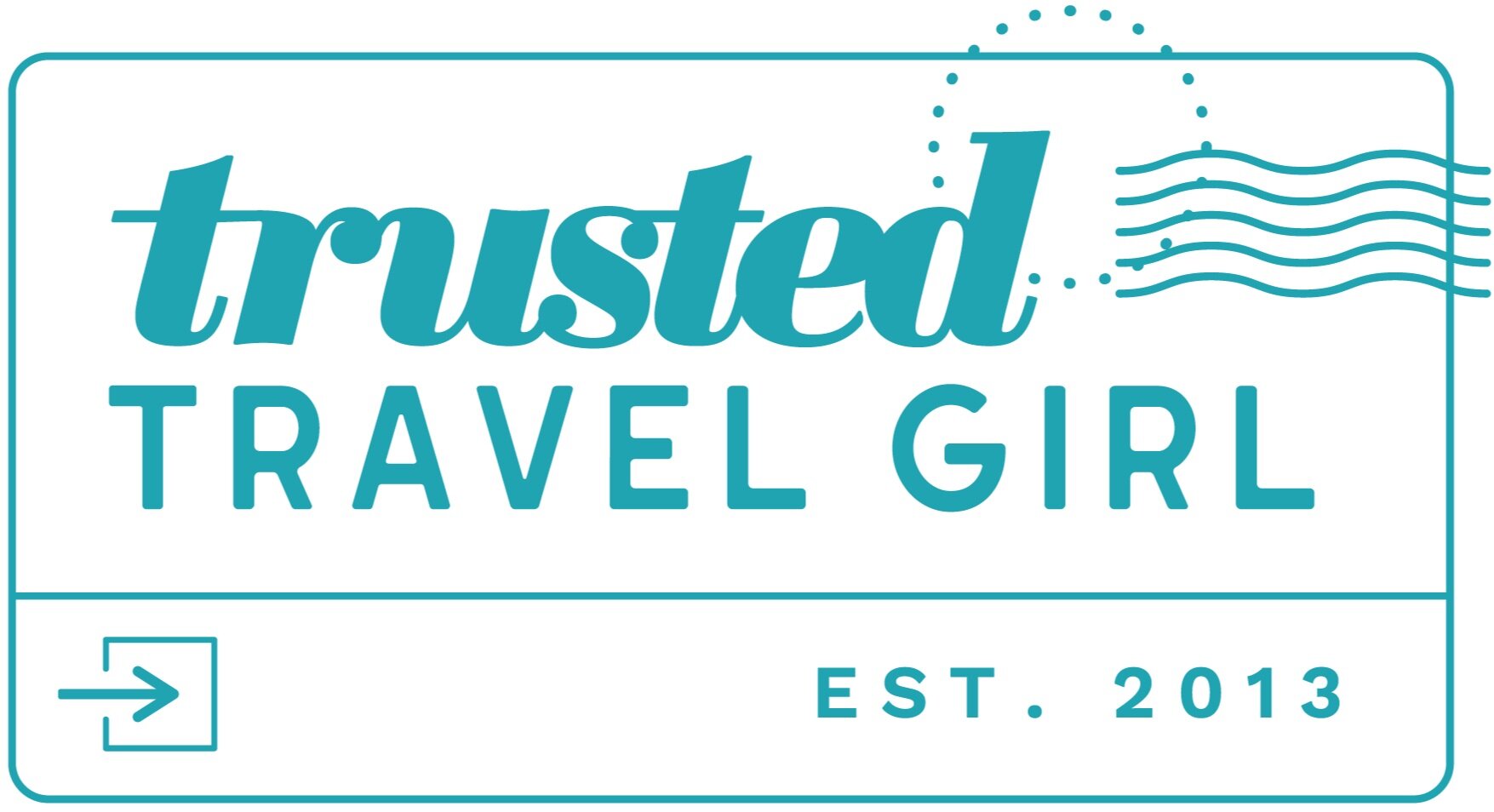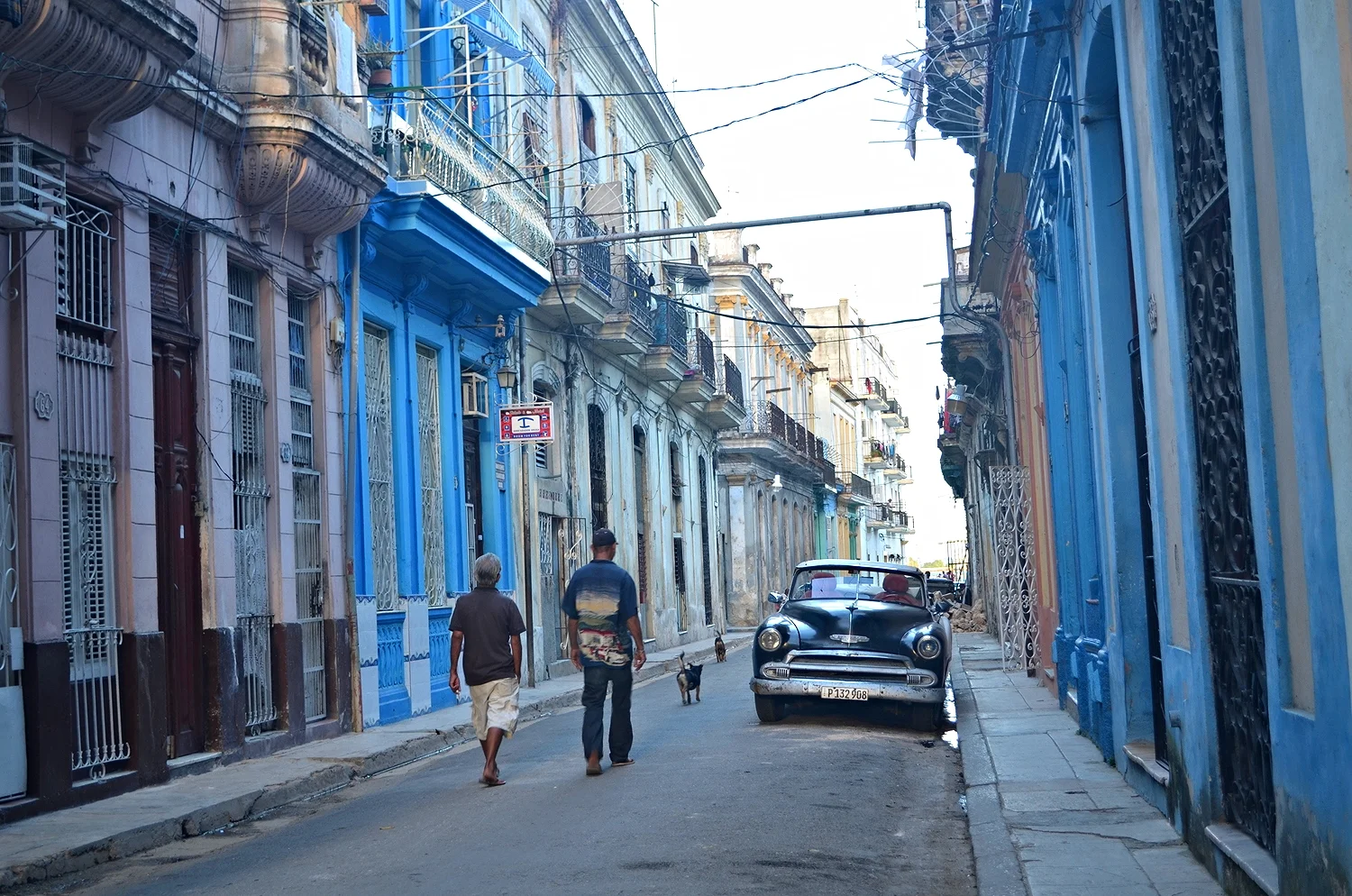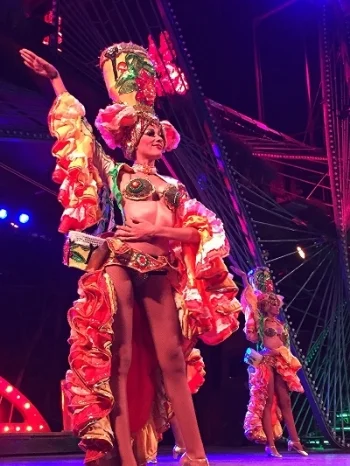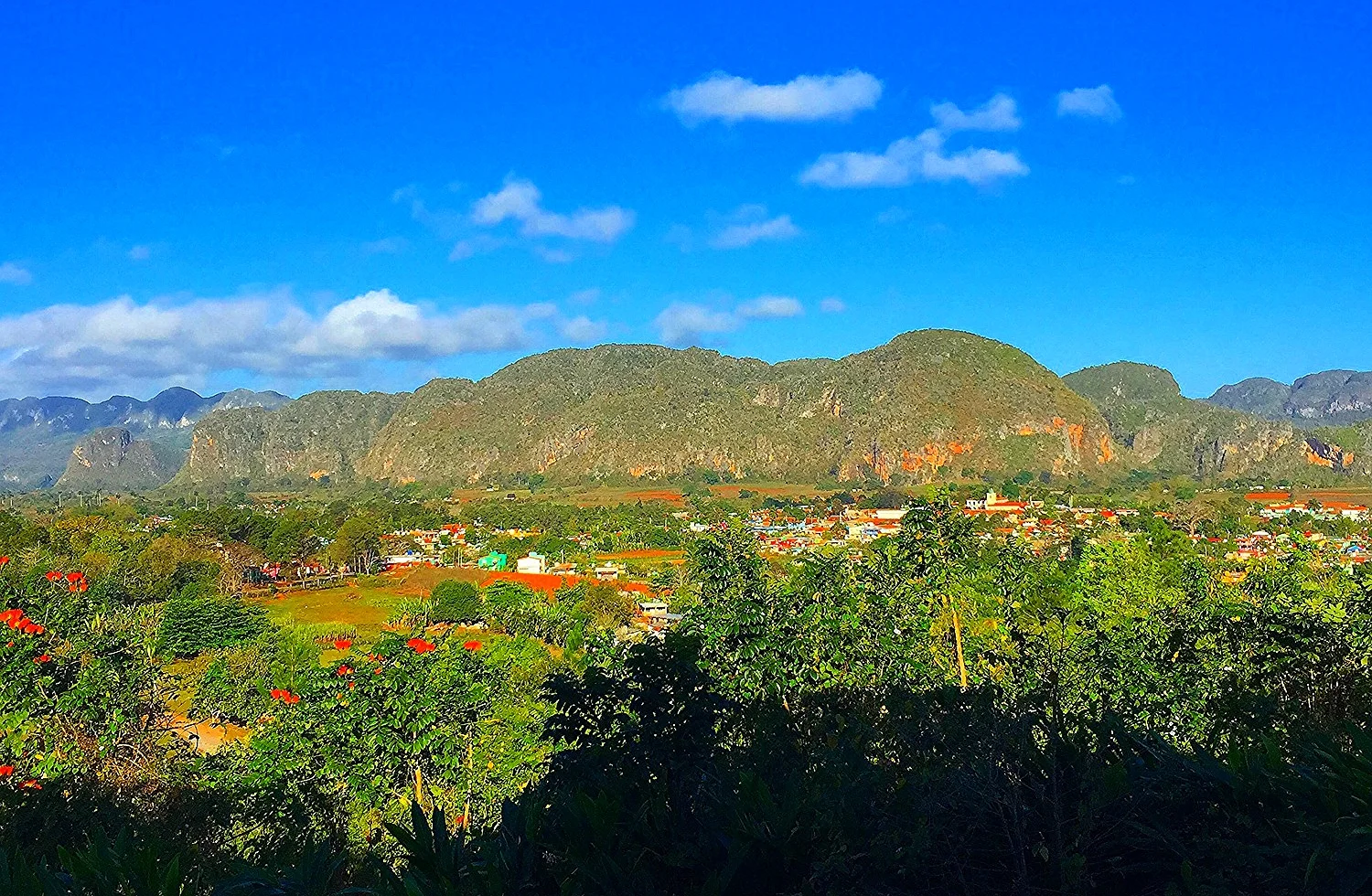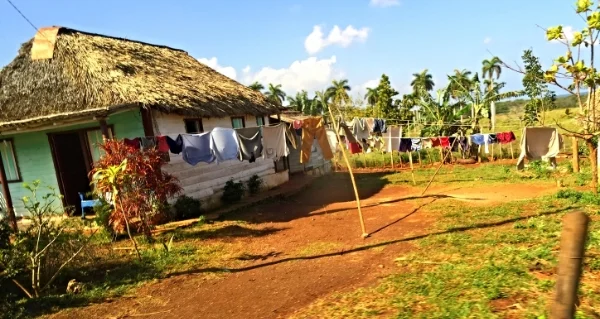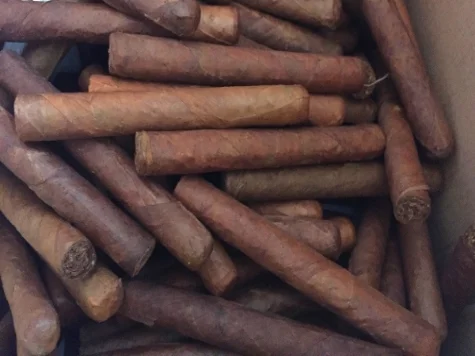Trusted Travel Girl's Guide to Cuba
The dilapidated yet stunning streets of Havana
For an updated guide to Cuba, check out The Ultimate Guide to Cuba
*Editors Note: Since the publication of this article, travel to Cuba has changed. As of July 20th, 2015, the US and Cuba have re-established diplomatic relations. Both countries have re-opened embassies for the first time since ties were severed between the two in 1961. Additional changes include the ability for US Citizens to book their own travel directly. Within recent months more and more Americans have found ways to travel to Cuba.
During the extent of a fifty-four-year embargo, Cuba has remained a mystery to the American public, yet with the recent move to re-establish relations with the US, curiosity seekers can now see what the country really has to offer.
What allure does Cuba’s antiquated setting hold? I would compare it to the exclusive nightclubs and lounges of LA—the more out of reach, the more enticing it becomes. A forbidden fruit, if you will. Only 90 miles off the southern most point of the United States and still we know very little about this small island country.
The center of Old Havana
After two decades of wanting to travel to Cuba (blame my love for I Love Lucy and Desi Arnaz for my Cuba fascination), I was finally able to legally book a trip for “professional research.” However, when I announced my trip to friends and family, they were terrified for my safety. But haven’t Europeans and Canadians been visiting Cuba for several decades? I have even met Americans who have visited illegally by entering from Mexico. So, what was the big deal? Well, no cell phones nor internet for the most part, but we survived traveling without these technologies prior to their invention.
These American classics really do roam the streets as if it were the late 1950's
We have all seen the photos and heard the tales of Detroit’s finest classics rolling down the streets in Cuba. If there is one thing that the Cuban people are incredible at, it’s the art of improvisation. Their ability to make something from nothing has allowed them to keep these 1950’s American classics running all of these years, and their resourcefulness shines through in everything they do.
It is true that the roads both inside and outside of Havana are in disrepair and that many of its structures are in poor condition, yet despite the dilapidation, the capital city is still stunning in all of its authenticity. So untouched by time that it’s almost beyond comprehension for a modern day American girl like myself.
There are so many misconceptions that still exist about Cuba. Before I arrived, I was under the impression that the Cuban people are not allowed to leave the country. Apparently, this is not the simple truth. The problem with trying to leave Cuba is that most Cubans do not have enough money for a passport ($100 CUC) and an exit visa ($300 CUC) to visit other countries. Some do have the means to leave, however, as I witnessed on my flight from Mexico City to Havana.
The lack of information about Cuba made it extremely difficult to plan my trip. However, I have come away with a new understanding of this incredible country and several tips for all you fellow travelers.
Cubana Air
How To Get There
Direct flights to Cuba from the US are still virtually non-existent, although as of two weeks ago, CopaAir has made booking without a travel agent much simpler. Unfortunately, it still requires flying through Canada, Mexico, Panama or the Cayman Islands. Living in Los Angeles, I found it to be easiest to fly to Mexico City on Alaska Air and then to Havana on Cubana. For more info on booking your own flights you can check out this post.
Travel Agent
I used the Canadian travel agency A. Nash Travel to help handle my travel health insurance, flights, hotels airport shuttles, three day tour, and tickets to the Tropicana. They did not ask for any government documentation that is usually difficult to obtain, unlike some other companies that I reached out to.
Additionally it should be noted that you will need a tourist card & proof of (travel) health insurance to enter Cuba and A. Nash Travel helped me obtain mine.
You need to understand before booking that you will face delays, lack of information, lack of a full stay in a single hotel, and many more challenges. This is not the fault of the travel agent, but rather due to the circumstances that Cuban tourism is facing right now. It is difficult for the agents to lock everything down because Cuba is well over its normal capacity for tourists at this time. Just this afternoon I received an email from Jury, the man I worked with at A. Nash, stating the following:
"Havana is full into July and we are still faced with the problem of putting people two days here, two days there, in order to accommodate them. You have been witness to the fact that there is a shortage of transportation. It’s a challenge but I love the Cuban people."
I am so thankful that Jury and his team worked tirelessly to secure hotels and flights for me when I was unable to book them myself.
A. Nash Travel, 5865 McLaughlin Road, Unit 2B, Mississauga, Ontario, L5R 1B8 Canada. Phone: 905-755-0647 or 800-818-2004 ext. 221 Fax: 905-755-0729 or 800-818-2005 *Ask for Jury*
What To Know Before You Go
Electrical Outlets
Most of us cannot live without our electronics, so first let me touch on the electrical outlets. I had heard mixed information about which type of outlets I would come across in Cuba, so I came prepared with all of my converters. I figured with the popularity of Canadians and Europeans that there may be a variation, and I was right. At Ambos Mundos I found an outlet in the bathroom that accepted both European (Type C) and North American (Type A) electronics. However, the bedroom was only equipped with the same sockets that we have in the States. I experienced a similar situation for the night I spent in Soroa as well.
Currency
There are two forms of currency in Cuba: the Cuban Peso (CUP) and the Cuban Convertible Peso, known as CUC (Pronounced ‘kook’… don’t worry it sounds less funny once you are there). The national currency is the Cuban Peso, and this is the currency that the Cuban people use for their transactions. Tourists are allowed to use the Cuban Convertible Pesos, although it is possible for tourists to exchange for CUP. 1 CUC is equivalent to 1 USD, however you will lose almost 10-15% with the exchange fee, so many travelers think it is best to exchange Euros or Canadian dollars. I found that most hotels would exchange at a set rate of 0.87 CUC per $1 USD. Just remember to come with enough cash to get you through your trip, as you cannot withdraw money from the ATM or charge to American credit cards the way that other tourists from Canada, Europe, and the rest of the world can.
Internet
"We've come to get our fix!" I'd joke to Sergio at the internet desk of the Parque Central Hotel. WiFi is kind of like a drug you don't realize you are addicted to until you can only get it in limited doses. Internet is difficult to come by while in Cuba, especially once you leave Havana. The internet is still technically illegal, although many Cuban nationals have found ways around it.
However, don't fear! I can personally confirm that the following list of hotels have access to the internet: Parque Central, Hotel National, and Memories Miramar. Although you will need to purchase internet cards to access the internet, these can be obtained at the hotel.
WiFi Cards
Where to stay
I worked with A. Nash Travel to arrange my hotel stays, however I learned about more affordable and exciting options from my experience that I will be taking advantage of on my next trip and which you should definitely consider.
Casas
The sign for a 'casa' in Cuba
Spanish for “home,” casas are one of the most affordable options for lodging in Cuba and offer the authentic experience of staying in a native Cuban’s residence. Though these home-stays provide an inexpensive option, finding the best ones do require a bit of research.
In order to find your perfect casa, search TripAdvisor for “Cuba Bed and Breakfasts,” and you will be able to evaluate each based on locale, reviews, price, etc. There is a bit of a catch, however, in that TripAdvisor will rate the best ones but will not contain their contact information. To contact the casas which interest you the most, conduct a Google search for the names of these casas and add “email” to your search. This should yield the email address for your selected casas, and once you have emailed them, wait to see who emails you back.
During my visit, I encountered two American travelers from San Diego, Louis and Robert, who highly recommended a casa by the name of Vista al Prado. Vista al Prado boasts clean rooms, a friendly host, breakfast, and a view of the ocean. I can also attest that the host is quite nice, for when trying to connect with Louis and Robert, I had to call their casa several times. When I did speak on the phone with their host, he was the kindest person, and his English was excellent. The contact email for Vista al Prado is: fllanes@gmail.com.
When you arrive, you will probably see many Casa signs, or signs that say “Room for Rent.” There are thousands all over Havana, and they look like upside-down anchors. As you walk down the street, you may also hear people call out “Casa, Casa!” to you, signaling that they want to rent you a room. However, with this method you never know what situation you will be getting or how safe your belongings may be there. As a rule of thumb for any trip, it is always good to have a backup plan before you leave so that you do not have to risk being stuck in a less than desirable situation.
Hotels
Ambos Mundos Hotel, home to Ernest Hemingway for 10 years
Ambos Mundos is a great choice for its historic significance, especially if you are a fan of Ernest Hemingway. He actually lived in the hotel for 10 years with one of his four wives. I booked my first two night stay at Ambos Mundos through A. Nash Travel.
Hotel National De Cuba
Hotel National De Cuba is the certainly the most luxurious hotel in Havana, which explains why Anthony Bourdain stayed here on his trip a few years ago. Back in Havana’s heyday, it housed a casino and was originally built with money from the mafia. Today it is still home to one of the best shows in Havana, the Cabaret Parisién. The hotel and its grounds are absolutely stunning and boast a beautiful ocean view, gardens, and grand rooms.
Armadores de Santander is another great choice in Old Havana. When I checked in, I kindly asked the front dest clerk (who warmed up to me because I told her she shared the same name as my mother) for a room with a decent view. I was assigned a top-floor room with two large doors that opened to a shared patio, complete with a view of the harbor. Though I will admit it was not the best section of the harbor, the view was nice to have nonetheless, and the patio boasted several lounge chairs (as if I had time to tan).
Where To Drink
El Floridita is known as 'The Cradle of the Daiquiri'
If you wish to indulge in the staple drink of Cuba, there is no better place to go than El Floridita. A bar frequented by Ernest Hemingway, El Floridita boasts a bronze statue of the writer in the location where he used to sit and enjoy his daiquiris. Though the daiquiris today are not made the same way they were when Hemingway used to drink them (they now use blenders to keep up with the demand), they are still just as delicious as ever. Hemingway is said to hold the all-time record here, 16 daiquiris in one sitting… and it should be said he drank them as doubles with no sugar. Ask for the bartender Abel, and if you are nice he may even be willing to share their trade secrets. I had the pleasure of going behind the bar and having Abel teach me how to make a real Cuban daiquiri.
El Floridita, Havana Cuba
When I travel, there is always that one place that I will return to over and over again, the place where I become a familiar face, and on this trip that place was El Floridita. I was there so often, I wouldn't be surprised if they had erected a bronze statue of me next to Hemingway by the time I visit next. I'm not normally a big drinker, nor one to hang out at a bar, but the drinks were incredible and the people I met were fascinating. Plus, they have the best plantain chips on the planet! Certainly not a bad place to waste some time.
This sign above the bar in La Bodeguita reads: "My mojito in La Bodeguita, My daiquiri in El Floridita" -Ernest Hemingway
Another interesting venue is La Bodaguita Del Medio, which is famous for its mojito and for its reputation as the other bar that Hemingway frequented. Although you should certainly pay a visit for the sake of going, unfortunately this place probably had the worst mojito of my trip. The drink was warm and flat. Such a disappointment, but don't worry because the best mojito in town wasn't too far away...
The rooftop bar at the Ambos Mundos hotel is said to have the best mojitos in town, and the view from the roof isn’t bad either. 153 Obispo, La Habana Cuba +53 7 8609529
Cafe El Escorial is a must for any coffee lover, as they have the best coffee in Havana. Everything is roasted and ground fresh, and the coffee is so popular that there is actually a limit as to how much you can purchase (Although I heard if you tip the girl, you can walk away with an extra bag or two over the course of your trip) Mercaderes No 317 Plaza Vieja | Old Havana, Havana, Cuba
If you want to satisfy your sweet tooth, order a chocolate drink at the Museo del Chocolate. This place is my kinda museum. I ordered a rich, luscious hot chocolate, but the cold chocolates looked divine as well. Calle Amargura, La Habana, Cuba. +53 7 8664431
Where To Eat
If there is one word you need to learn in Spanish before you leave for Cuba, it is langosta, which means lobster… and it is delicious!
Until recently, restaurants just like hotels were all run by the government. However, in recent years the government has loosened the reigns and individuals have been allowed to begin their own businesses out of their homes (Ahh, the smell of capitalism). These restaurants are called Paladares. They range in price and quality, but if you know where to look, you can find some amazing food for a great bargain. For example, at El Trofeo I had an incredibly large portion of deliciously fresh lobster that was practically swimming in a Cuban sauce for only 12.50 CUC. Just try and beat that!
El Trofeo. Paseo del Prado #563, e/ Dragones y Teniente Rey.. Habana Vieja, Cuba. E-mail: losnadldos@enet.cu ,Tel: 863 29 85. Hours of operation: Noon until Midnight
El Aljibe Restaurant, Havana Cuba
Another excellent place to have lunch or dinner is El Aljibe, which is a government run establishment. El Aljibe is famous for how they prepare their chicken, but they do more than a few things well. I came for lunch and it was one of my favorite meals throughout the entire trip. The beans, the rice with sauce spooned over top, the plantains… all so incredibly delicious. Just order “the special” and you will be all set with everything above. Oh, and I should certainly mention the deliciously fresh guava juice that I enjoyed before my meal arrived.
Nightlife
Cuba has several exciting nightlife options. There are excellent bars, great places to dance, and then... there are the cabarets!
Tropicana
There are two major cabarets in Havana, the Cabaret Parisién and the iconic Tropicana. My travel agent recommended that I visit the Cabaret Parisién at the Hotel National de Cuba, however after reading reviews online and discussing it with The Points Guy Brian Kelly (who had just returned from Havana), I decided on the Tropicana for its historical significance and the reputation it held during its golden age. The Tropicana has been around since 1939 and was a hot spot where stars such as Marlon Brando, JFK, Ernest Hemingway, Rita Hayworth and Elizabeth Taylor often frequented. Although the Tropicana has long since seen its glory days, this place remains a vital piece of Cuban culture.
There are several factors to consider when deciding between the Tropicana and the Cabaret Parisién. The Tropicana will run about $85 CUC, where the Cabaret Parisién will cost about half of that. Moreover, the Tropicana is much further outside the city center, whereas, depending on where you are staying in Havana, the Cabaret Parisién should be much easier to get to. The Tropicana is an outdoor facility, so you may want to bring a light jacket depending on the weather (although, I didn't need mine and I am always cold!). The Cabaret Parisién, however, is indoors, so the weather will not be an issue. I do not know for sure what the policy is for the Tropicana if the weather isn't cooperating, so this is something that you should definitely find out ahead of time. Nevertheless, if you want to ensure attending a performance with good weather, you should have no trouble booking a ticket the day of, like I did.
You should not miss a trip to this incredible show, for it is a piece of Cuban history that is still as vibrant and alive as ever. I am so glad that I made the trek to experience it!
Trusted Travel Girl Tips for the Tropicana:
Get a seat as close as you can!
Reserve a car to not only drop you off, but also to come back and get you after the show.
Skip the dinner (I heard it isn't very good).
Your ticket will include a bottle of rum once the show begins.
Do's & Don'ts
Do
Engage with the locals
Plan on being flexible
Be open minded
Drink & smoke cigars
Take a lot of photos because soon this country won’t look the same as it does now
Take a ride in an American classic car, preferably a convertible. You can find them anywhere, but you can pick out any one you want easily from Parque Central right near El Floridita and the Iberostar Parque Central Hotel (The hotel with internet)
Don’t
Don't expect use of the internet to be as easy as it is at home.
Do not buy Cuban cigars from anyplace on the street or in anyone’s home. People on the street will try to convince you they are factory workers that get cigars from the factory once a month & re-sell them. I recommend the shop inside the Hotel Parque Central by Iberostar.
Don't talk about politics too boldly, most specifically the Revolution. This is one of those places where people still do not feel safe speaking out against their government. It's a crazy concept, coming from a place that enjoys freedom of speech to the extreme and pokes fun at the President on Saturday Night Live and every other media outlet.
Don't expect to be disliked for being American; in fact, it will be quite the contrary. The Cuban people are excited and happy to interact with people from the United States.
Don't forget to save $25 CUC for your departure. There is a $25 CUC cash fee to leave the country and go home. I doubt you want to be selling you iPhone at the airport because your spent your CUC on mojitos the night before, so my suggestion is keep that separate from everything else.
Don’t expect your US credit card to work, at least not yet. I was told mine would work March 1st, but that was not the case.
Politics and The Revolution
After two mojitos, I was brave enough to ease the conversation into politics with one local and see what the mindset of the Cuban people is really like. Shockingly, he spoke candidly about his dissatisfaction with the Cuban government. Interestingly enough, I found over and over again that the locals were willing to open up and express their needs and dissatisfaction - but they won’t do so if they think someone is listening, such as on a busy street or in a taxi, because they still have fears that they are being spied on.
The Cuban people are desperate to be more connected to the rest of the world (although I did find CNN and BBC in all of my hotel rooms). They are starving for the technology that we continually take for granted, like access to the Internet and better phones. The people of Cuba are told that things will change, but they mostly are concerned that this won’t be true. One local told me that many Cubans think their President is a liar and they don't trust him. Many others feel as though the negotiations with the United States may fall through and they will be stuck right where they have been. "Cautiously optimistic" does not even begin to express how hesitant the people are in believing that change will come. My personal opinion is that change is coming, and quickly... but they definitely aren't ready for it.
One odd thing I noticed was the lack of historical information before 1959. All that anyone seems to discuss is the last 50-60 years, but what was life like before "The Revolution"? It's almost too difficult to tell. This was what made my tour guide, Osvaldo, so great. He was really able to fill in the gaps of time that seemed to be missing from so many other stories.
Viñales, Cuba
My Three Day Tour:
Las Terrazas, Soroa, Cayo Levisa and Viñales
I’m not a big fan of tours, I think they are cheesy, but my travel agent suggested going on one to get the lay of the land. Also, I didn't have much of a choice because there were no hotels in the entire city of Havana for those 3 days. If you take a tour, be sure to ask if it is only in English before you go. I was somehow put on a 3-day Spanish-speaking tour and let me tell you, without access to the Internet on my phone, it was the most isolating three days of my life. My Spanish is extremely limited to say the least, and the English from my fellow tour mates and tour guides was not much better than my Spanglish. However, a tour has the advantage of allowing you to visit these places if you do not wish to rent a car.
The first day of our tour got a late start, as they were over 2 hours late picking me up at my hotel (guess they were on island time). The first destination was Las Terrazas, though I did not get much from my time here because the guide spoke no English. From what I gathered, the main point of interest is their coffee plantation, which has existed since colonial times. On a more sobering note, the history of Las Terrazas plantations involved the use of slave labor, which subjected African slaves to toiling and inhumane conditions similar to cotton plantations in the South at the time. Though Las Terrazas offers lush landscape, without a proper tour (in English), I’d say skip it.
Orchid Garden. Soroa, Cuba
In Soroa we visited an orchid garden and a waterfall. Though the people were nice and the flowers and plants were exquisite, the waterfall was underwhelming. Again, unless you have a lot of time to see every inch of Cuba, I would skip it. I would use this day to go to Trinidad, which I did not get to see, but from what I have heard is exceptionally beautiful. Yet another disappointing feature of my time in Soroa was that my hotel room was covered in ants.
Beaches of Cayo Levisa
The second day we journeyed to Cayo Levisa. Cayo Levisa is an island, so you must drive through the jungly countryside to the harbor and then take a boat to arrive there. As I rode along the small farm villages, past the newly sprouted crops, I felt so thankful for the life I have in America. How could I not? Most of the people we passed were getting around by horse & buggy and the homes looked no larger than the size of the bedroom I grew up in. The island is very small and uninhabited with the exception of tourists. The water was crystal clear aqua blue and the white sandy beach felt like baby powder between my toes. I left with the impression that all of the beaches in Cuba are this way, so you don’t necessarily need to visit Cayo Levisa to experience the same beauty. If you have the time, I would search out a place where tourists don’t typically go for a more authentic Cuban vibe. Just be sure to stay far away from Varadero if you are trying to avoid loads of other tourists. I think almost as many tourists visit Varadero as visit Havana, although I’ve heard it’s beautiful so it may be worth a day trip. Just bring your sunscreen because the sun is strong!
The diving in Cayo Levisa was absolutely splendid however. If you are going to Cuba you really should go scuba diving. Imagine the crystal clear water of the Florida Keys without being overrun and destroyed by too many divers. Coral reefs are often destroyed by over fishing and careless divers who step on the coral and break it. This was not the case when I was in Cuba. My dive in Cayo Levisa lacked an exciting shark, sea turtle, or stingray spotting, however we enjoyed seeing many different types of colorful fish, a lobster, and the multicolored coral, which remained perfectly intact.
Me, diving in Cayo Levisa, checking out this incredible Brain Coral
On the way to Viñales from Cayo Levisa, as our little bus passed once again through small villages, down winding roads, and in view of a beautiful mountain in the sunset, I had to reconsider my intention to skip this trip. This is Cuba. Not the touristy places that we stop to hand in our vouchers and have our meals, but the places we drive through and the people we pass on the streets. Wow.
Viñales, Cuba
In Viñales we went to see a painting and a cave, both of which were extremely boring tourist traps… but I was stuck. However, my time in Viñales was not completely wasted as it provided me with the opportunity to buy one of the most sought-after Cuban commodities - cigars.
I purchased twenty cigars for $1 CUC a piece. 20 cubanos for $20 USD, what a bargain! As the man rolled up the dried tobacco leaves, he looked at me and said, “United States?” After I confirmed, he responded, “Obama and Raul… friends.” He then handed me the freshly rolled cigar, I placed it in my mouth, and he lit what would be the freshest cigar that will ever meet my lips, a cigar straight from the plantation. Pretty darn cool.
The farmer of the tobacco plantation showing how a cigar is made
Trying my first Cuban cigar, it was barely a minute old by the time it was lit and reached my lips
Points of Interest
Take the ferry and walk up to the Christ Statue
El Morro Castle
Havana Club Museo
Take the train to Hershey
Hemingway Musuem (Ambos Mundos)
The Hemingway House
Spend a night in Trinidad
Fly or drive to Santiago De Cuba
The Original Sloppy Joe's
Museum of the Revolution
Che Guevara Mausoleum
Orchid Garden, Soroa
Tobacco Plantation, Vinales
Havana Tour Guide
I always like to hire a local guide to get oriented and gain a little more historical information about the place I am visiting. Private guides are often more like friends that can hang out, tell you about the local dives, and put the historical information you already know into context. The tour guide I chose, Osvaldo Nicolas, came reccomended from The Points Guy Brian Kelly and his friend Lori, who beat me to Havana by just a couple of weeks.
Osvaldo was a very knowledgable guide. He had a significant amount of historical information to share with me, even dating back to the formation of Havana. He charged me a pre-negotiated rate of $50 CUC for 6 hours, plus found a taxi driver for $40 CUC for 4 hours to drive us to all of the places I wanted to see. Additionally, his English was excellent.
I do have to give fair warning, though, that he expected me to pay his bill for lunch at El Aljibe and for a lemonade at a cafe without first asking. Not that it was extremely expensive, but it was stressful when I was quickly running out of Cuban Pesos, had no $USD left to convert, and had no way to extract money from the ATM's. Which leads me to a good point... whatever amount of cash you think you will need In Cuba, double it. After you double it, throw in a few extra Benjamins. You just never know when you might need it, because if there's another thing that the Cuban people are good at besides improvisation, it's hustling tourists.
Regardless, I would still recommend my guide. He really was fantastic and spent all day with me. You can reach Ozzy by emailing him before arrival or calling once you get to town. He requests that you send emails to both email addresses because sometimes they can be down due to the old telecom system in Havana.
Osvaldo.rodriguez73@nauta.cu and copy to znicolas@openmailbox.org
+53 53257200
What To Buy & Bring Home
Cigars
Lets point out the obvious and start with Cuban Cigars, the most popular being Cohibas, Montecrisco, and Romeo & Juliet.
Rum
Ahhh, Cuba. Rum mojitos, daiquiris, and more mojitos. If you aren’t drinking while in Havana, you had better be in AA! I’m serious. And, you will most certainly want to bring some of that delicious rum home to enjoy, or as gifts for your friends. Havana Club is most popular and very inexpensive, however my bartender at Ambos Mundos recommended Ron Santiago De Cuba Anejo, which is suppose to be better quality than Havana Club. Nevertheless, locals seem to agree to disagree between the two, as everyone has their preference.
Humidor
Though you can’t bring home too many Cohibas for the cigar lover in your life, you should also add a beautiful humidor to these cigars, which is exactly what I did for my dad.
Artwork
I love bringing back artwork from other countries and Cuba has been no exception. However, you must receive a special stamp from the artist in order to leave Cuba with the product. Supposedly, this is to prevent people from leaving the country with prized art or artifacts. So be sure to ask the artist or shop for that stamp.
US Laws for bringing back Cuban Goods
When returning to the States, you are limited to $400 worth of goods only, of which tobacco and rum can only total up to $100 USD.
Be sure to send a postcard to your family and friends. How incredible would it be to receive a Cuban postcard in America! It’s not everyday that your friends & family receive one of those, and it will be quite the souvenir after the borders are completely opened back up between the US & Cuba.
Final Thoughts
All in all, no matter how you decide to get to Cuba and how you decide to spend your time when you finally get there, the time is now. If you wait, you will be doing yourself a great injustice. This season alone, Havana has already seen the largest surge in tourism that anyone can seem to remember. My travel agent Jury said that after the announcement was made by President Obama that the application process was no longer in effect, his office was receiving phone calls every 5 minutes from Americans saying, “I want to go to Cuba and I want to go tomorrow." Ask any of the travelers in Havana what they were doing there, and most of them would reply in some way or another that they were visiting Cuba now in order to beat the Golden Arches. Everyone there seemed to have the same idea that I did - book a last minute trip to check out the country before the embargo is completely lifted, McDonalds arrives, and Americans destroy it’s crumbling, yet authentic, charm. To visit a place that still remains this untouched by time is something you may never have the ability to experience again. And definitely, if you travel there sooner rather than later, you will be rewarded with the experience of a lifetime.
Entry and Exit stamps that you will receive in your passport upon arrival and departure from Cuba
